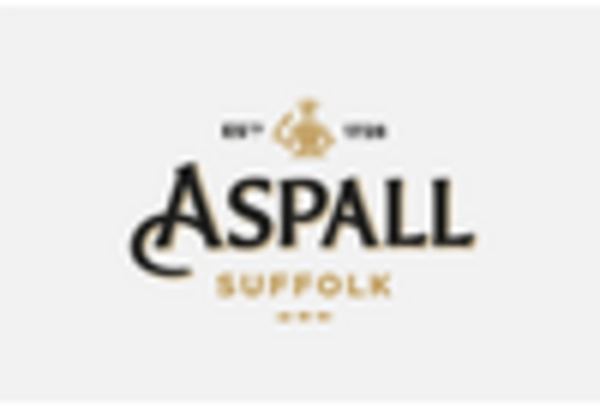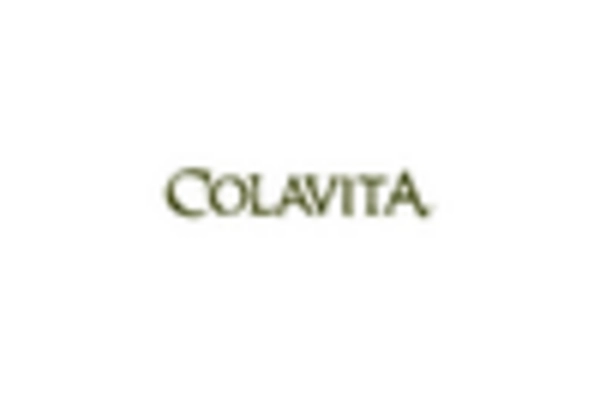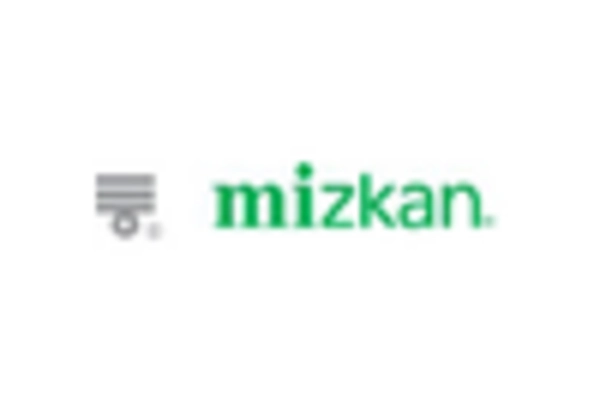Expansion of E-commerce Platforms
The rise of e-commerce platforms is significantly impacting the vinegar market in the US. With the increasing preference for online shopping, consumers are now able to access a wider variety of vinegar products than ever before. Recent statistics indicate that online sales of vinegar have increased by over 30% in the last year, reflecting a shift in consumer purchasing behavior. This trend is likely to encourage traditional retailers to enhance their online presence and offer more diverse product selections. The vinegar market is thus witnessing a transformation, as companies invest in digital marketing strategies and logistics to meet the growing demand for online purchases. This shift may lead to increased competition among brands, ultimately benefiting consumers through better pricing and product availability.
Rising Demand for Organic Products
The vinegar market in the US is experiencing a notable shift towards organic products. Consumers are increasingly seeking organic vinegar options, driven by a growing awareness of health and environmental issues. According to recent data, organic vinegar sales have surged by approximately 25% over the past year, indicating a strong preference for natural ingredients. This trend is likely to continue as more consumers prioritize organic certifications in their purchasing decisions. The vinegar market is adapting to this demand by expanding its organic product lines, which may enhance market growth and attract health-conscious consumers. As a result, companies that invest in organic vinegar production could potentially gain a competitive edge in the evolving market landscape.
Culinary Trends and Experimentation
The vinegar market in the US is being influenced by evolving culinary trends that encourage experimentation with flavors and ingredients. Chefs and home cooks alike are increasingly incorporating various types of vinegar into their recipes, from balsamic to apple cider vinegar. This trend is supported by data showing that specialty vinegar sales have risen by approximately 15% in the past year. As consumers become more adventurous in their cooking, the demand for unique and artisanal vinegar products is likely to grow. The vinegar market is responding by introducing innovative flavors and blends, catering to the desires of culinary enthusiasts. This focus on creativity in the kitchen may drive further growth in the market, as consumers seek to enhance their culinary experiences.
Increased Awareness of Health Benefits
The vinegar market in the US is benefiting from a heightened awareness of the health benefits associated with vinegar consumption. Research suggests that vinegar may aid in digestion, weight management, and blood sugar regulation, which resonates with health-conscious consumers. As a result, vinegar products are increasingly being marketed as functional foods, contributing to a rise in sales. Recent data indicates that vinegar consumption has increased by around 20% among health-focused consumers in the last year. This trend is likely to encourage manufacturers to highlight the health benefits of their products, potentially leading to an expansion of the vinegar market. Companies that effectively communicate these benefits may attract a broader customer base, further driving market growth.
Sustainability Initiatives in Production
The vinegar market in the US is witnessing a growing emphasis on sustainability initiatives within production processes. As consumers become more environmentally conscious, they are increasingly favoring brands that prioritize sustainable practices. Recent surveys indicate that approximately 40% of consumers are willing to pay a premium for products that are produced sustainably. This trend is prompting companies in the vinegar market to adopt eco-friendly production methods, such as using organic ingredients and reducing packaging waste. By aligning with consumer values, brands can enhance their market appeal and potentially increase their market share. The focus on sustainability may also drive innovation in product development, as companies seek to create environmentally friendly vinegar options that resonate with eco-conscious consumers.

















Leave a Comment